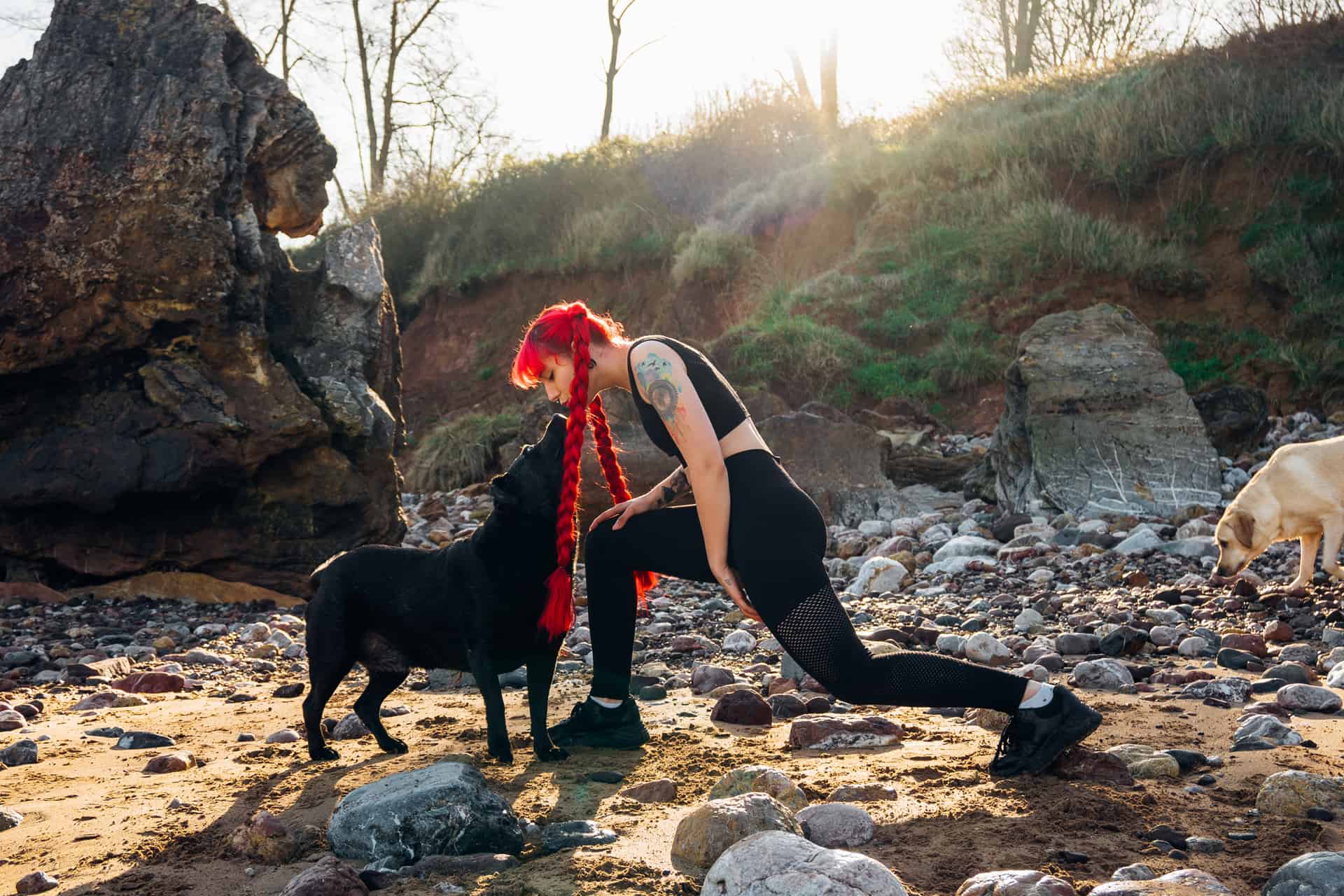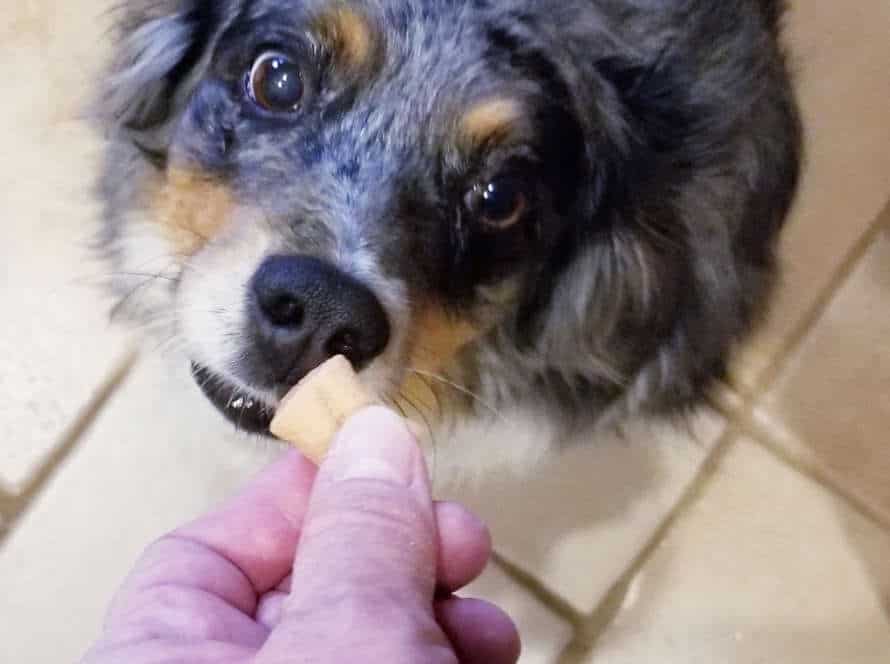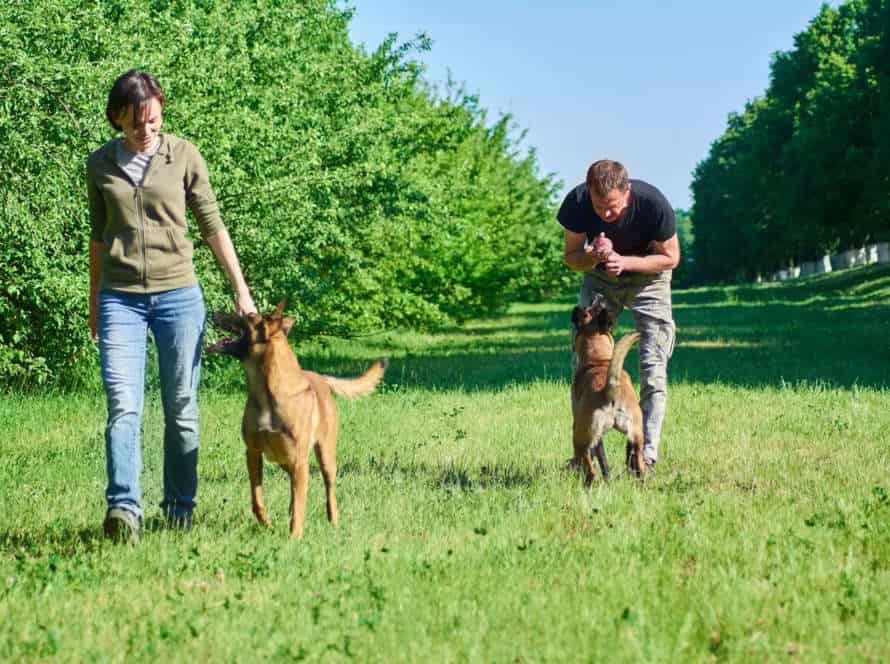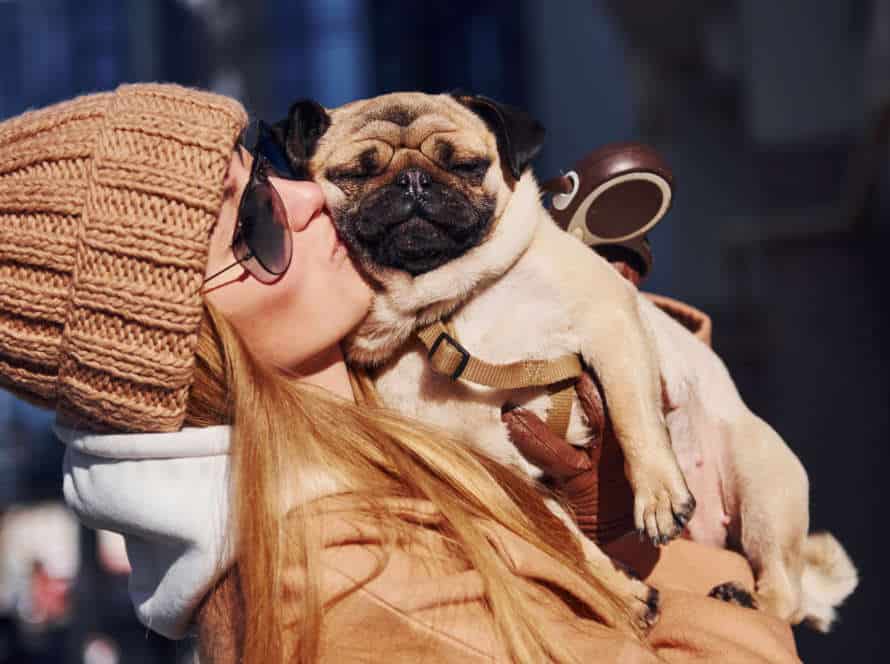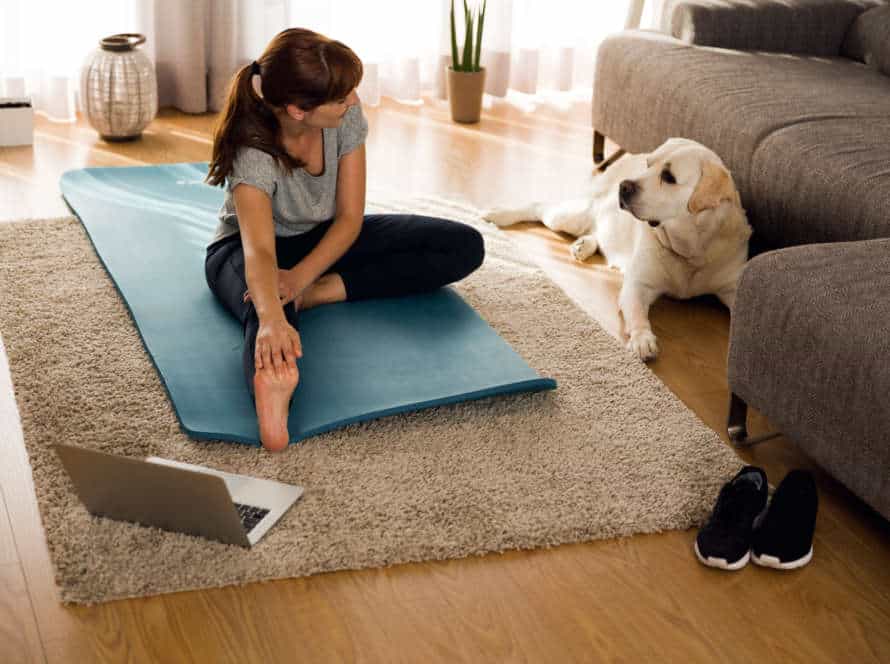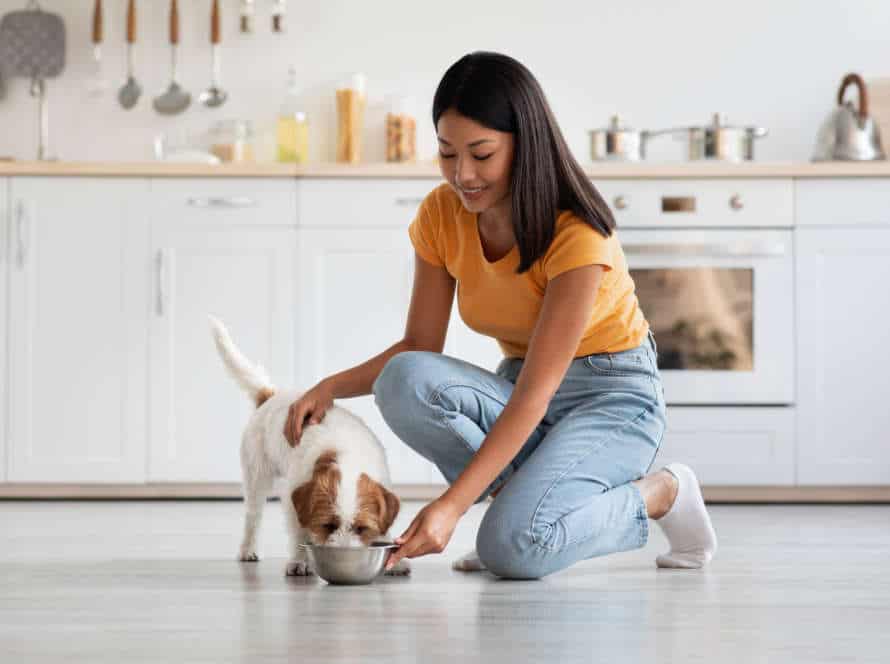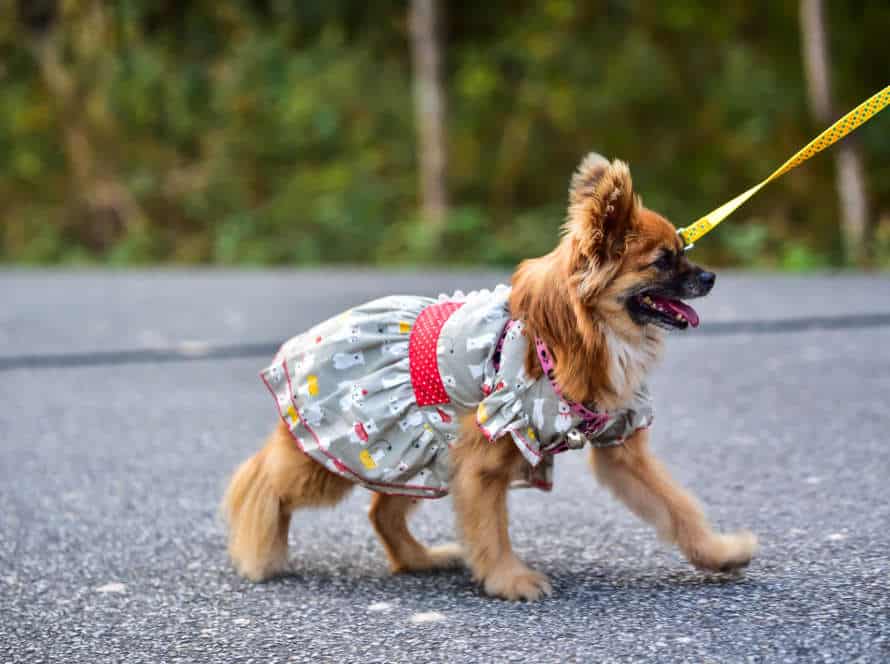Boost Your Dog’s Health and Happiness with These Exercise Ideas
Exercising your pup is a must for their well-being. Here are some ideas to keep your dog healthy and happy:
- Walking – Good for the heart, joints and reduces stress.
- Fetch – Improves agility & hand-eye coordination, plus bonding.
- Swimming – Low impact exercise is great for joint issues.
- Tug-of-war – Great for muscles & dental health.
- Agility training – Sharpens cognitive abilities & coordination.
Be sure to tailor your exercises according to your pup’s age, breed and physical condition for a safe & fun routine.
Understanding Your Dog’s Exercise Needs
Dogs all need exercise differently. It’s vital to understand this to give your pup the best health and joy! Exercise helps keep your pup in shape, and stops them from getting bored and destructive. Knowing their needs is the key to giving them the right amount of activity.
So, let’s investigate the various exercise needs of dogs!
Different dog breeds have different exercise requirements
It’s essential to comprehend that distinct dog breeds necessitate diverse exercise demands to keep them content and fit. Here are some principles for dog breed exercise demands:
- High-energy breeds, like Border Collies and Siberian Huskies, desire at least 1-2 hours of high-intensity exercise per day.
- Breeds such as Beagles and Australian Shepherds, which were initially reared for hunting or herding, necessitate at least 30-60 minutes of moderate-intensity exercise per day.
- Breeds which are smaller in size, e.g., Chihuahuas and Miniature Schnauzers, require at least 30 minutes of low-intensity exercise per day.
- Elderly or less active breeds, such as Bulldogs and Pugs, necessitate at least 20-30 minutes of low-intensity exercise per day.
Note these are merely general guidelines, and you should always assess your dog’s individual needs and preferences when scheduling their exercise routine.
Pro tip: Regular exercise not only maintains your dog healthy but also intensifies the bond between you and your pet.
Age and health of your dog determines exercise routine
Age and health are key when deciding an exercise plan that’ll boost your pup’s health and joy.
Pups need only light exercise. Activities should be about socializing and mental stimulation – not tiring physical activities.
Adult dogs should get 30 minutes to an hour of moderate to intense exercise every day. This depends on the breed and energy level. Regular walks, runs, and play are great for them.
Older dogs need less demanding activity. Low-impact exercises like short walks, swimming, and easy yoga will help maintain their mobility and flexibility.
Consult your vet before you start a new exercise plan – especially if they have any medical issues or are healing from an injury.
Pro Tip: You can combine different exercises to keep your dog entertained and inspired.
Sign of lack of exercise and its consequences
Weight gain is an oft-seen sign of insufficient exercise in dogs. This can result in numerous health issues such as joint problems, diabetes, and heart disease. Other signs may be fatigue, restlessness, destruction, and anxious or aggressive behavior.
Exercise is critical for a dog’s physical and mental health. The benefits are numerous; from less stress and anxiety to better digestion, immunity, and heart health.
Therefore, give your dog chances to play, run, and explore – both indoors and outdoors. Some great ideas are fetch, walks, interactive play, and dog sports. Lastly, adjust the exercise to your pup’s breed, age, and health.
Indoor Exercises Ideas for Dogs
Exercise is essential for the health, joy and wellbeing of your pup. But don’t worry – even if you have no outdoor space, there are plenty of indoor activities to keep them active. Here are a few of the best ideas to keep your dog in tip-top condition!
Fetch the toy game
Fetch – it’s a classic! It’s a great way to exercise your pup and help their brain at the same time. Here’s how:
- Choose a soft toy that’s easy to throw and pick up.
- Start by throwing it a short distance. Encourage your dog to go get it.
- When they pick it up, call them back and reward them with praise and a treat.
- Gradually increase the distance of your throws. And keep rewarding them for bringing the toy back.
Fetch is a great way to bond with your dog. Plus, it’s an awesome way to burn energy and promote health and happiness. So next time you’re looking for an indoor activity with your pup, give fetch a go!
Staircase exercise
Staircase exercise is a great way to get your pup active indoors. It can really benefit their health and happiness. Here’s how to do it:
- Warm up before starting.
- Pick a sturdy staircase that can support your pup’s weight.
- Attach a leash to their collar and climb the stairs together.
- Do this 10-15 minutes and then walk back down.
- Be aware of your pup’s behavior. Stop if they seem worn out, have trouble breathing, or look uncomfortable.
Pro Tip – Chat with your vet first to make sure your pup is healthy enough for this exercise. Also adjust the intensity and time according to your pup’s needs and abilities.
Treadmill walks
Treadmill walks are a great way to keep your pup in shape, even when outdoor exercise is not an option. To train them, let your dog smell and look at the treadmill when it’s off. Then, turn it on low speed. Lead them onto the treadmill and reward with treats and praise. Stand with them and guide until they are confident walking on their own. Gradually increase treadmill speed and duration. Always supervise your dog when they’re on the treadmill and never leave them alone.
Indoor agility course
Crafting an indoor agility course is a great way to give your pup a fun and strenuous workout that can help keep them content and healthy all year long. Here are some tips for making your very own:
- Use cones or other household items to craft weave poles.
- Utilize pillows or cushions to create a hurdle or jump.
- Construct a tunnel using a large box or play tunnel.
- Instruct your pooch to jump up onto stools or chairs.
- Employ a hula hoop as a jump or hoop.
Pro Tip: Prior to starting your indoor agility course, make sure your canine has mastered fundamental obedience commands like “sit,” “stay,” and “come.” Additionally, ensure the space you design for the course is safe and free of clutter.
Outdoor Exercise Ideas for Dogs
The outdoors are grand! It’s a perfect spot to give your pup a workout. Both of you will have fun and it’ll even help their physical and emotional wellbeing. Exercise can lessen your pup’s stress while keeping them active and fit.
Here, let’s explore some awesome outdoor activities for your pup that you can do every day!
Walking and jogging
Walking and jogging are great ways to exercise your pup outdoors. This provides lots of physical and mental benefits, like keeping your pup’s weight in check, building muscle and joint strength, aiding digestion, and reducing the risk of chronic diseases. Plus, it can help improve their mood, reduce boredom, and decrease stress and anxiety.
If your pup is new to exercise or is overweight, start with short walks and slowly increase the duration and intensity. Always bring water, give frequent breaks, and avoid exercising in hot weather.
For the best results, aim for 30-60 minutes of walking or jogging with your pup daily. Not only will your pup enjoy spending time with you, but you’ll also be improving your own health and well-being.
Hiking
Hiking is great for pup’s health! It helps their muscles, hearts and brains. Here are some ways to make it a success:
- Start small and increase the length and challenge.
- Bring water and treats.
- Leash your dog and keep them under control.
- Check vaccinations and flea/tick treatments are up to date.
- Check trail regulations – are dogs allowed? Do they need to be leashed?
- Be mindful of your dog’s physical capability – adjust your pace and route to suit.
- Take breaks for water and rest.
With the right preparation, hiking can be fun and rewarding – a great way to bond with your fur baby and be healthier and happier!
Swimming
Swimming is an awesome pastime for pooches of different breeds, ages, and sizes! It not only helps boost their physical health, but it also makes for an enjoyable bonding experience. Here are some of the benefits:
- Low-impact exercise: Swimming is gentle on the joints and muscles, especially good for elderly fur-babies and those with mobility problems.
- Aerobic and anaerobic workout: It helps burn calories and increases heart health, while toning and strengthening muscles.
- Full-body exercise: It strengthens all muscle groups, boosting endurance, flexibility, and coordination.
- Reduces stress and anxiety: It induces relaxation and calms down their minds.
- Keeps them cool: Great way to cool off during hot summer days.
Pro Tip: Always keep an eye on your pup while they swim – not all dogs can swim effortlessly. Introduce them to water gradually, with lots of encouragement and rewards!
Playing fetch at the dog park
Playing fetch at the dog park is great for your pup! Here are the benefits:
- Socializing and building a bond.
- Burning off energy and reducing boredom.
- Improving agility, endurance, and mental sharpness.
For a successful session, get a sturdy ball or Frisbee, pick up after your pet, and supervise other pets. Avoid playing in hot weather and consider your pup’s age, abilities, and limits. Pro tip: Add variety to the game – try hide and seek or commands like ‘stay’ and ‘spin’.
Training your Dog for Exercise
Exercise is vital in keeping your pup healthy and content. It also helps in strengthening the connection between you and your four-legged friend. Training your doggie to be obedient and active is the best way to make sure they get enough exercise. In this piece, we’ll talk about how to train your doggo for exercise and what activities can help them stay healthy and joyful.
Teaching Basic Commands
Teaching basic commands to your dog is a must. It helps build communication and control. Commands like “sit“, “stay“, “come” and “drop” form the base of more complex training and exercise routines that benefit your pup’s health and happiness. Here are some tips:
- Positive reinforcement, like treats and praise, is key.
- Start simple and work up to harder commands.
- Be consistent with words and gestures.
- Practice in short bursts, and build up the length.
- Incorporate commands into fitness routines, like fetch and agility.
- Pro tip: If your dog is having trouble, break the command into small steps and reward them for progress.
Incorporate obedience training into exercise routine
Include obedience training in your pup’s exercise routine! It boosts health & happiness. Here’s how:
- Start with basic commands such as sit, stay, come, & heel. Use them when exercising. Practice heeling during a brisk walk or run.
- Add agility equipment like hoops, tunnels, & weave poles. Use for obedience & exercise.
- Keep training brief, fun, & positive. Use treats, toys, & lots of positive reinforcement.
- Remember to check with the vet. They’ll guide you on the best practices for your pup.
Positive reinforcement in training
Positive reinforcement is a great tool for training your pup. It motivates them and improves their health and happiness.
- Reward good behavior! Use treats or toys as rewards. Give praise with a cheerful voice and positive body language.
- Set achievable goals and celebrate successes. Be consistent and patient.
Pro-Tip: Positive reinforcement can be applied to house-training, leash-walking, and socialization.
Safety tips for Dogs during Exercise
Safety is key when it comes to exercising your pup. Plan ahead and consider potential hazards. Here are some tips to keep your dog healthy and safe while they exercise:
- Be mindful of your surroundings.
- Check the weather forecast to ensure you’re prepared.
- Keep an eye on your dog and make sure they don’t overdo it.
- Make sure your pup is up to date on their vaccinations.
- Bring along water and a bowl for your pup.
- Be aware of any potential risks.
Pre-exercise veterinary check-up
Before you begin a new exercise plan with your pup, it’s essential to get them checked out by a vet. This will make sure they are healthy and ready for physical activity.
The vet will assess their overall health and look for any problems that could be made worse by exercise. They’ll also check their joints, muscles, and bones to make sure they are strong and flexible.
If the vet agrees, there are lots of enjoyable and safe ways to help your dog be healthy and content through exercise. Like throwing a ball, going for a walk, or taking them on a hike.
Avoid exercise during hot weather
It’s essential to prevent heatstroke and other heat-related illnesses by avoiding exercising your dog in hot weather. Here are some safety tips for exercising your pup:
- Steer clear of exercise between 10 am and 4 pm when it’s hottest.
- Opt for early morning or evening walks when the temperature is lower.
- Take your dog to grassy areas or shady trails – this will protect their paws from hot pavement.
- Bring plenty of water and a collapsible bowl for your pup to drink from during exercise.
- Keep an eye out for signs of heat exhaustion, like excessive panting, drooling, and lethargy. If your pup shows these symptoms, head for shade and water right away.
Follow these tips to keep your pup safe and healthy, while still giving them essential exercise to stay well.
Hydrate your dog
Hydration is key for your pup’s health and safety during exercise. Here are some tips to keep them hydrated:
- Bring water! Carry a bottle and a collapsible bowl or pet water bottle on the go.
- Take breaks: Schedule pauses during exercise to give your pup a chance to drink water and rest.
- Watch water intake: Make sure your pup has access to H2O, but don’t let them guzzle too much, especially after exercise.
- Look out for dehydration: Keep an eye out for signs like panting, lethargy, and dry gums.
Knowing the importance of hydration and following these tips can keep your dog healthy and happy while they work out.
Use proper exercise equipment
To keep your pup safe during exercise, make sure you use the right equipment. Here are some tips:
- Attach a sturdy leash and collar or harness to ensure your pup is in control.
- Utilize a treadmill or exercise equipment made just for dogs to prevent harm.
- Provide water before, during, and after exercising, to prevent dehydration.
- Don’t exercise your pup in extreme temperatures – it can lead to heat exhaustion or hypothermia.
By following these safety tips and using the right equipment, your pet will stay healthy and joyful while getting the exercise they need.
Conclusion and Final thoughts
In the end, exercising with your pup is a must. Whether it’s walking, running, fetch or training, there are heaps of ways to keep them active and content.
Apart from warding off obesity and aiding heart health, exercise can also improve their conduct and make your connection stronger.
Remember to think about their age, breed and fitness level when selecting exercises.
Overall, physical activities can mean a more enjoyable and vibrant life for both of you. So, arrange a fun workout with your pup today!
Pro tip: If you don’t know what exercises to pick, talk to a vet or a dog trainer. They’ll create a personalized plan that’s best for your pup.
Frequently Asked Questions
1. What are some outdoor exercises I can do with my dog to improve their overall health?
Outdoor exercises you can do with your dog include hiking, swimming, playing fetch, and going for runs or walks.
2. How often should I exercise my dog to ensure they remain healthy and happy?
The amount of exercise your dog needs will depend on their breed, age, and health. Generally, dogs should get at least 30 minutes to 2 hours of exercise a day.
3. How can I make sure my dog stays safe during outdoor exercise activities?
You can ensure your dog stays safe during outdoor activities by keeping them hydrated, maintaining their leash and harness, avoiding intense activities during hot temperatures, and seeking medical attention if your dog shows any signs of discomfort or distress.
4. Can indoor exercise be just as beneficial for my dog’s health?
Yes, indoor exercises such as playing fetch, tug of war or using a treadmill can be beneficial for your dog’s health if done correctly and consistently.
5. How can I get my dog excited about exercise activities?
You can get your dog excited for exercise activities by making them fun and interactive. Incorporate toys and treats, vary activities, and provide positive reinforcement such as praise and rewards.
6. What are some health benefits of exercising my dog?
Exercising your dog can improve their physical and mental health. It can aid in weight management, improve cardiovascular health, reduce stress and anxiety, and increase socialization and behavioral training opportunities.

